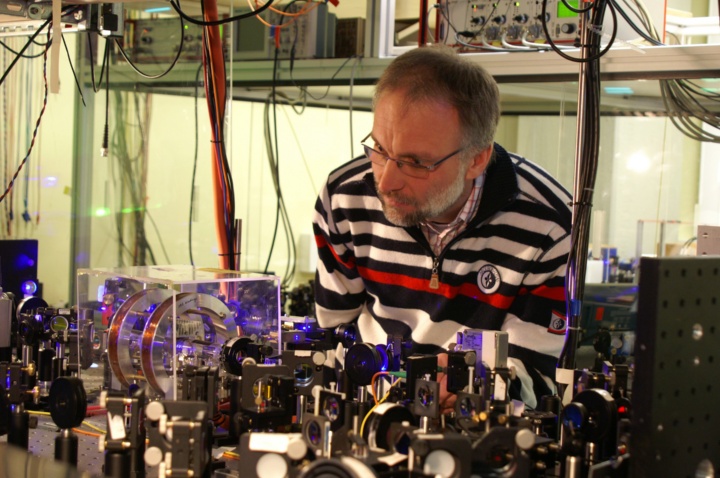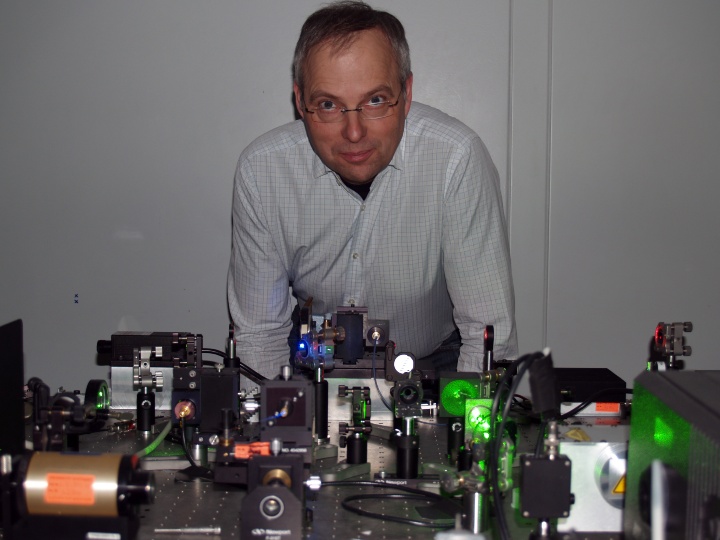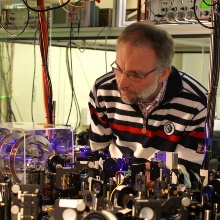Science minister of Baden-Württemberg Professor Dr. Peter Frankenberg
congratulated. „The decision of the European Research Council is an honor and great success for the
two scientists and the University of Stuttgart alike. The award is also an indicator on how well
Baden-Württemberg is positioned in fundamental research. In this 3
rd competition the ERC awarded altogether six scientists in Baden-Württemberg with an
advanced grant”, according to Minister Frankenberg.
„Over the past few years quantum physics has become a research focus in Stuttgart
on an extremely high level“, stated the Rector of the University Prof. Wolfram Ressel. „We are very
pleased that this expertise has been acknowledged by the European Research Council now even with
two Advanced Grants. This has also a signaling effect with regard to our proposal in the Excellence
Initiative by the German federal and states governments. It shows our excellent international
standing in quantum physics - also in the cooperation with other research partners.”
ERC Advanced Investigator Grant LIQAD „Long-range interacting quantum systems and devices”
(Prof. Tilman Pfau)
In principal the smallest unit of information is a bit which classically can take
the value 1 or 0. These two values could also represent true or false, right or left, up or down.
The information era is based on the exchange and efficient processing of such information
units. The ultimate capacity limit of data processing is reached by the use of the smallest unit
available in nature, which is a single quantum e.g. a single photon. Such quantum information
carriers follow the laws of quantum mechanics, where also states of superposition of 0 and 1 are
allowed. New kinds of quantum devices are expected to send, receive, store and process these
quantum information carriers. This offers new possibilities for secure data transfer and
quantum information processing by logical operations.
On their way to achieve this goal, Prof. Tilman Pfau and his team are following
an approach based on atomic gases. In order to process data the single photons have to interact
with each other by changing their state. This is a challenge, since light beams normally
interpenetrate without interaction. In the approach of Tilman Pfau’s group interaction is achieved
by exciting the photons in atomic gases by efficient absorption. Atoms in highly excited states
interact with each other before the excitation and therefore the atom returns to a state with lower
energy and light in form of a photon is emitted. In order to be scalable this process has to be
perfectly controlled.
The scientists use both ultra cold clouds of atoms and for room temperature
applications micro vapor glass cells, which they study parallel. They work with a series of
specialized laser systems. Close cooperations exist with theoretical physics and the electrical
engineering departement.
The grant award is due to numerous scientific results that were published by
Tilman Pfau and his team over the last years in international publications like Nature and Nature
Physics and that attracted the interest of the public as well. Examples are are the first-time
realization of a dipolar quantum gas and a Bose-Einstein condensate with chromium atoms, the
discovery of giant molecules that consist of a highly excited Rydberg atom and an atom in the
electronic ground state (
http://www.uni-stuttgart.de/aktuelles/presse/2009/29.html),
as well as the latest research on giant molecules in a quantum superposition
http://www.uni-stuttgart.de/aktuelles/presse/2010/126.html).
Further information:




